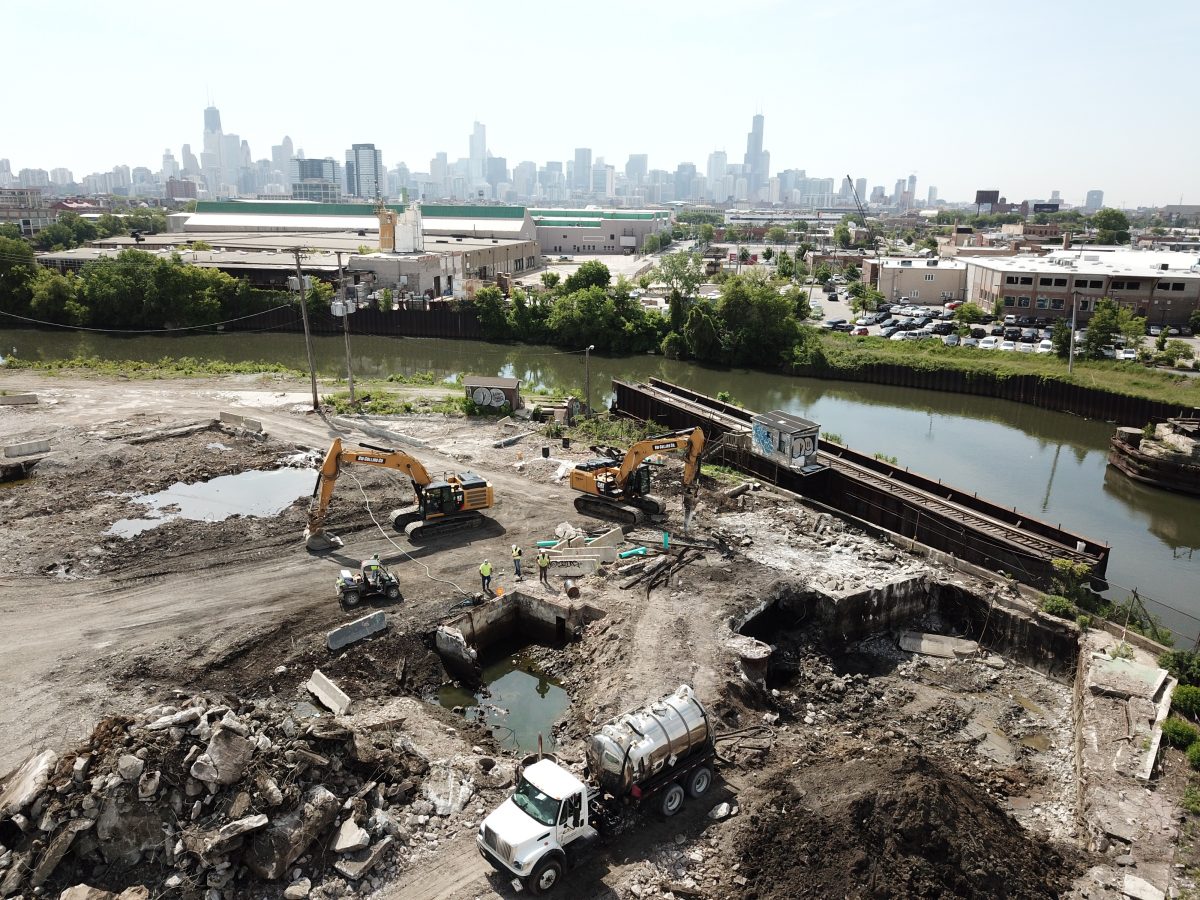
Sterling Bay Hits Milestone Achievement in Environmental Cleanup at Lincoln Yards
In partnership with the Illinois Environmental Protection Agency, Sterling Bay and its joint venture partners have, at their own expense, successfully completed the following environmental cleanup efforts at Lincoln Yards, Chicago’s 55-acre mixed-use development that will transform a former industrial wasteland into a welcoming riverfront community with public green space:
- Removed 25,000 tons of soil contaminated with petroleum products and volatile organic compounds
- Treated 200 cubic yards of hazardous lead soils to render non-hazardous
- Removed and disposed of 30 underground storage tanks containing petroleum products
- Recycled 200,000 gallons of petroleum impacted water and 30,000 tons of clean concrete
“Our environmental rehabilitation efforts at Lincoln Yards are making great progress in preparing the site for continued development,” said Andy Gloor, CEO. “This is a big undertaking as the land has been used for industrial purposes for over 100 years, but we’re committed to reversing the effects of the site’s previous use and transforming it into healthy, active open space that Chicagoans can enjoy for generations to come.”
For more information on the environmental remediation efforts being made at Lincoln Yards, view the press release below or visit www.LincolnYards.com.
Lincoln Yards is Cleaner
Sterling Bay Announces Successful Remediation of 25,000 Tons of Polluted Soil and 200,000 Gallons of Contaminated Water at Lincoln Yards
Local developer decontaminates polluted brownfields as first step in the creation of a natural riverfront environment in the North Branch Corridor
CHICAGO – (SEPTEMBER 23, 2019) Sterling Bay, the Chicago-based real estate investment and development firm, in partnership with the Illinois Environmental Protection Agency, has successfully remediated 25,000 tons of polluted industrial soil and 200,000 gallons of contaminated water at Lincoln Yards, the company’s 55-acre mixed-use development that will transform a former industrial wasteland into a welcoming riverfront community with public green space.
“Our environmental rehabilitation efforts at Lincoln Yards are making great progress in preparing the site for continued development,” said Andy Gloor, CEO of Sterling Bay. “This is a big undertaking as the land has been used for industrial purposes for over 100 years, but we’re committed to reversing the effects of the site’s previous use and transforming it into healthy, active open space that Chicagoans can enjoy for generations to come.”
To date, Sterling Bay and its joint venture partners have, at their own expense, successfully completed the following cleanup efforts at Lincoln Yards:
- Removed 25,000 tons of soil contaminated with petroleum products and volatile organic compounds
- Treated 200 cubic yards of hazardous lead soils to render non-hazardous
- Removed and disposed of 30 underground storage tanks containing petroleum products
- Recycled 200,000 gallons of petroleum impacted water and 30,000 tons of clean concrete
“We are thrilled to see the land along the North Branch cleaned up,” said Margaret Frisbie, Executive Director of Friends of the Chicago River. “Creating a clean slate is a huge step forward in fulfilling Sterling Bay’s commitment to transform the old industrial corridor into nearly a mile of natural riverbanks and open space that will provide places for people to play and wildlife to thrive.”
In addition to the significant environmental remediation that has already been achieved on-site, as well as the additional efforts to be completed over the next year, much of the existing power infrastructure in the area – which was built at a time when standards for conserving energy and managing water quality did not exist as they do today – will also be restructured.
Lincoln Yards, when complete, will meet the City of Chicago’s goals for sustainable development by setting a target to achieve LEED-ND certification for the entire development. Lincoln Yards will incorporate high-performance design that will positively contribute to the sustainability of the overall development and will serve as a model for future industrial regeneration projects along the Chicago River.
“The ongoing environmental remediation efforts at Lincoln Yards are a major step forward in addressing the public health issue caused by the site’s industrial past. I’m encouraged that Sterling Bay is making significant headway in creating a safer, greener community for Chicago residents who live in and visit the North Branch Corridor.” said 2nd Ward Alderman Brian Hopkins.
To learn more on Lincoln Yards and the plans for continued environmental remediation, visit www.lincolnyards.com or follow Lincoln Yards on Facebook, Twitter, and lnstagram.